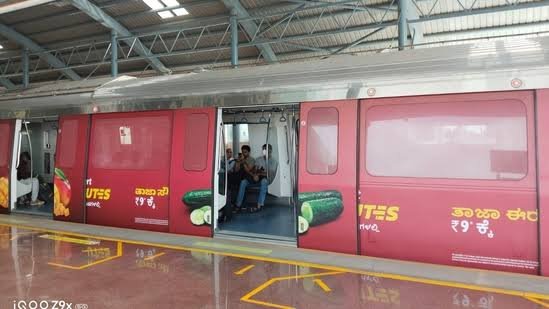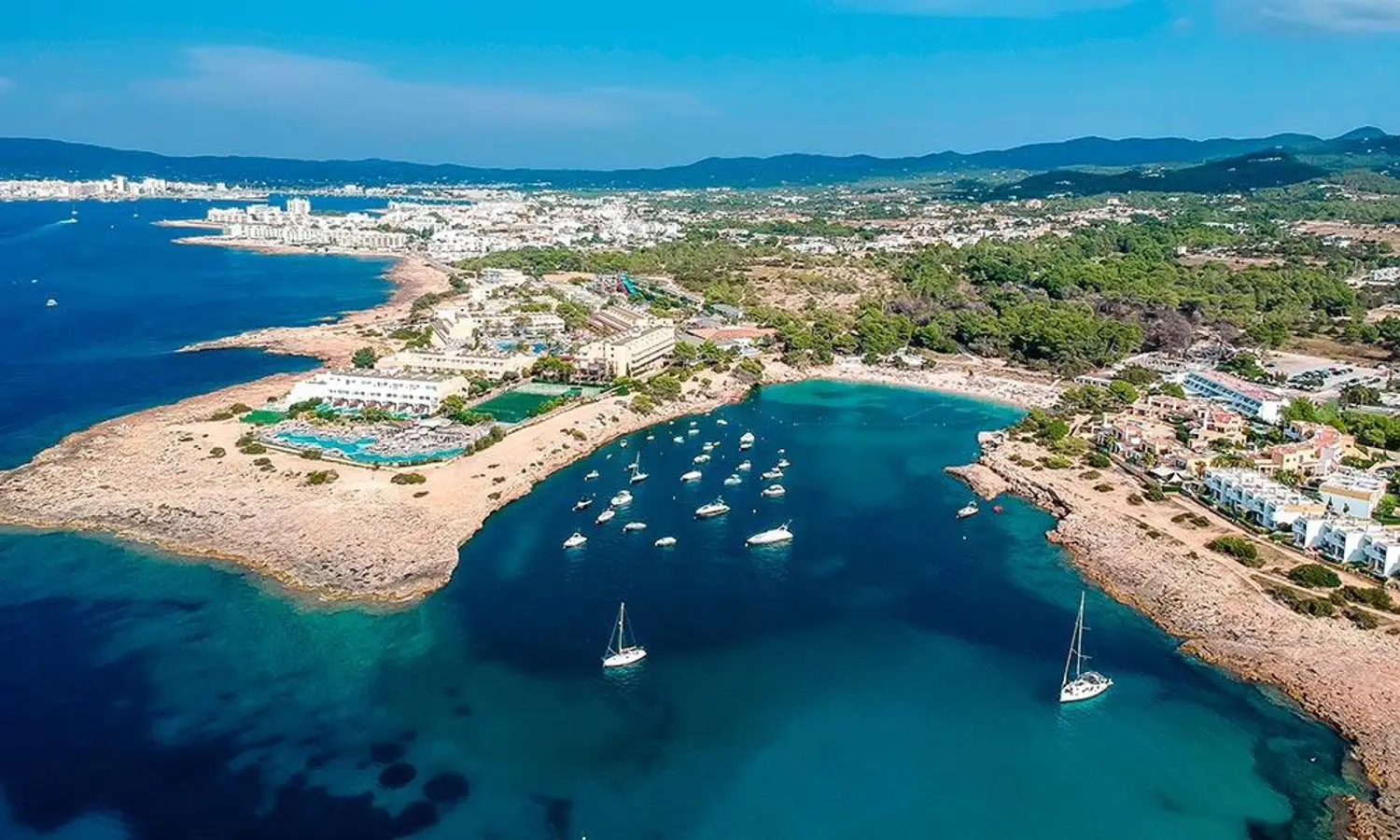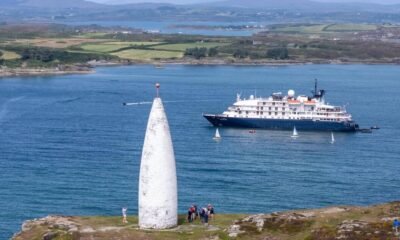Travel Trends
Ozempic effect and elegant AI: 2025 luxury travel trends

Trends and insight source Stylus has revealed 10 luxury travel trends for 2025, including the Ozempic effect, elegant AI, and ‘coolcations’.
As unveiled at the TTG Luxury Travel Summit last year, Stylus‘ top trends for 2025 range from play for all ages to elite souvenirs.
One trend is about rethinking the boundaries of age, as more and more older people enjoy younger lifestyles. At the same time, millennials and Gen Z are showing a desire for slower, restorative experiences.
‘Play for age’ is another major trend, and it reveals growing demand for joyful escapism for all ages, from adults’ playgrounds to immersive art installations.
Medical tourism for treatments and procedures is a burgeoning trend, Stylus says, as is the Ozempic effect – an increase in guests using GLP-1 medications while travelling.
Stylus has also identified elite nomads as a group of luxury travellers to cater to, as well as innovative and sustainable solutions to private jet usage as a key trend.
Additionally, the use of AI is increasing in the hospitality industry as operators attempt to provide a personalised and seamless experience.
Wellness and medical tourism trends
Circadian wellness is a further trend to watch, Stylus suggests. This comes as the global wellness tourism industry is predicted to reach $1.4 trillion in 2027.
As for ‘coolcations’, luxury travellers are moving towards cooler destinations to escape the intense heat caused by climate change.
Finally, status souvenirs will be big business, with affluent travellers seeking branded or elevated merchandise from their trips.
blooloop recently discussed technology and trends in the travel industry with Rafat Ali, founder and CEO of Skift, an information and intelligence brand for travel executives.
Images courtesy of Red Sea Global
Travel Trends
Bengaluru adds trains for festivals

To manage the increasing passenger traffic during the festive period of Independence Day and Ganesh Chaturthi, the Indian Railways has announced three special trains from Bengaluru to Goa and Belagavi. These services aim to clear the extra rush of travellers heading to their hometowns or preferred destinations during the holidays. The initiative has been welcomed by citizens, especially those who face difficulties booking tickets during peak festival seasons.
The three trains—numbered 06541, 06545, and 06543—will operate on specific dates in August. For example, train 06541 will depart from Sir M Visvesvaraya Terminal in Bengaluru on August 11 and reach Vasco Da Gama in Goa the next day. The return journey is scheduled with train number 06542 from Vasco on August 12. These limited-run trains are a practical solution to accommodate increased seasonal demand without overburdening regular services.
Train number 06545 will run from Bengaluru to Belagavi on August 12, returning as train number 06546 on August 13. Similarly, the third special train, 06543, will depart for Goa on August 16 and return on August 17. These trains will have stoppages at major stations like Tumakuru, Arsikere, Hubballi, and Londa to maximize accessibility for passengers across Karnataka. This careful routing opens the door to better travel options for residents beyond just Bengaluru.
Each of these trains will be fully reserved, with categories such as sleeper class, AC coaches, and general compartments included. Travellers are advised to book tickets in advance to secure seats, especially since no unreserved seating will be available. This measure ensures a smoother boarding process and a more organised journey for everyone involved.
The introduction of these special trains reflects Indian Railways’ readiness to respond to regional travel needs during national and cultural holidays. It opens a convenient door for those seeking to reconnect with family, attend religious festivities, or simply enjoy a break. With enhanced service and thoughtful scheduling, these routes promise a smoother festive experience for Karnataka’s travelers.
Travel Trends
EU Holiday Package Prices Rise in 2025

Eurostat data shows that package holiday prices in the European Union rose in June 2025 compared with the previous year, with variations between countries and markets. While the EU’s overall inflation rate stood at around 2.5% annually, package holidays registered a slightly higher increase of 2.8% for consumers. International holiday packages, which take travelers outside their home countries, saw prices climb by 2.7%.
The data also highlights significant differences between individual countries. In Germany, a key source market for Mediterranean tourism including Turkey, package holiday prices increased by 1.6%. France recorded a rise of 1%, while Italy saw a much sharper increase of 5.4%. Poland, considered a growing market for outbound travel, reported an annual rise of around 5.1% in package holiday prices.
Understanding EU Package Holiday Prices
Package holidays include a combination of travel, accommodation, meals, guides, and other services. They often come in the form of all-inclusive vacations or tours and can also cover half-day and one-day excursions or religious pilgrimages. International packages involve travel to a destination outside the traveler’s home country, while domestic packages are confined to destinations within national borders.
The overall 2.8% increase in EU package holiday prices is slightly above the general inflation rate, indicating that travel costs are rising faster than average consumer prices. These increases vary greatly by country, influenced by demand trends, seasonal patterns, and destination-specific factors.
Package Holiday Price Changes in Key Markets
| Country | Annual Change (%) |
|---|---|
| EU average | +2.8 |
| International packages (EU) | +2.7 |
| Germany | +1.6 |
| France | +1.0 |
| Italy | +5.4 |
| Poland | +5.1 |
Turkey Leads in Tourism Inflation
In June 2025, tourism-related inflation—covering hotel and restaurant spending—was highest in Turkey, reaching 35.6%. This figure places Turkey well above all other European destinations. Data compiled by Turizmdatabank from Eurostat shows that North Macedonia followed with a 10.6% increase.
Among Turkey’s main competitors in the tourism sector, the rate of tourism inflation was considerably lower. Spain recorded 4.2%, France 2.8%, and Italy 3.6%. The EU’s overall tourism inflation rate, combining hotel and restaurant costs, stood at around 4.1%.
Tourism Inflation Rates in Selected Countries
- Turkey: 35.6%
- North Macedonia: 10.6%
- Spain: 4.2%
- France: 2.8%
- Italy: 3.6%
- EU average: 4.1%
Why Turkey’s Prices Stand Out
For European travelers, Turkey is often considered a relatively affordable destination due to currency exchange rates. However, the data shows that in local terms, costs for accommodation and dining have risen significantly. This trend suggests that while Turkey may still appear inexpensive for visitors paying in euros or other strong currencies, domestic price increases are outpacing those in competing destinations.
The rise in tourism inflation may be linked to high demand, changes in supply conditions, and broader economic pressures. Seasonal peaks, increased operating costs for hotels and restaurants, and global market shifts can all contribute to these price trends.
Outlook for the Travel Industry
As 2025 progresses, the travel industry in Europe faces a mix of opportunities and challenges. Rising package holiday prices and tourism inflation may influence traveler decisions, potentially shifting demand toward less expensive destinations or alternative travel formats. At the same time, strong demand in many markets suggests that consumers remain willing to spend on travel experiences despite broader economic concerns.
Industry stakeholders—from tour operators to hoteliers—will be watching pricing trends closely. Balancing affordability with profitability will be key to sustaining growth, especially in competitive markets. For destinations like Turkey, managing rapid price increases while maintaining appeal to international travelers will be an important consideration moving forward.
Travel Trends
FCCA and Dominican Republic strengthen partnership to boost cruise tourism

SANTO DOMINGO, DOMINICAN REPUBLIC – Florida-Caribbean Cruise Association (FCCA) announces a strengthened partnership with the Dominican Republic to enhance cruise tourism and generate long-term benefits for the country’s economy, communities, and cruise guests.
During a series of high-level meetings between FCCA leadership and the Dominican Republic’s tourism and port authorities, both parties committed to a shared vision: to position the Dominican Republic as a premier cruise destination in the Caribbean by delivering exceptional guest experiences, supporting local communities, and driving sustainable growth.

FCCA President Adam Ceserano.
“This partnership goes far beyond cruise calls,” said Michele Paige, CEO of FCCA. “It’s about creating long-term opportunities for the people of the Dominican Republic. Together, we’re identifying actionable ways to improve the guest experience, increase economic benefits, and support infrastructure development that will position the country as a regional leader.”
The collaboration includes plans for improving the quality and consistency of shore excursions, integrating more locally made products and cultural experiences into the cruise offering, enhancing workforce training, and addressing key port and operational improvements.
FCCA also emphasized the importance of cost containment to ensure continued growth, including competitive port pricing and sustainable tourism development strategies that will encourage more cruise lines to invest in long-term deployment.
“This alliance will help the Dominican Republic harness the full economic potential of cruise tourism,” added Paige. “By working hand-in-hand with the government, ports, and private sector, we are building a model of collaboration that benefits everyone – from cruise lines and passengers to local vendors and communities.”

Dominican Republic’s Minister of Tourism David Collado.
The strengthened partnership forms part of the FCCA’s Strategic Partnership Program, which works with destinations to identify needs, match opportunities, and build long-term relationships between the cruise industry and local stakeholders.
With this strengthened alliance, the Dominican Republic is clearly emerging as a powerhouse in cruise tourism. By partnering with FCCA, the country now has a strategic path forward to achieve its goals – from enhancing the visitor experience to maximizing economic opportunities and promoting sustainable tourism development.
As a testament to this growing relationship, the Dominican Republic will also host FCCA’s prestigious PAMAC Destination Summit, which will take place in June 2026 and join key cruise executives with destination and tourism leaders to further strengthen ties and explore new opportunities for growth.
The article FCCA and Dominican Republic strengthen partnership to boost cruise tourism first appeared in TravelDailyNews International.
-

 Brand Stories3 weeks ago
Brand Stories3 weeks agoBloom Hotels: A Modern Vision of Hospitality Redefining Travel
-

 Brand Stories2 weeks ago
Brand Stories2 weeks agoCheQin.ai sets a new standard for hotel booking with its AI capabilities: empowering travellers to bargain, choose the best, and book with clarity.
-

 Destinations & Things To Do3 weeks ago
Destinations & Things To Do3 weeks agoUntouched Destinations: Stunning Hidden Gems You Must Visit
-

 Destinations & Things To Do2 weeks ago
Destinations & Things To Do2 weeks agoThis Hidden Beach in India Glows at Night-But Only in One Secret Season
-

 AI in Travel3 weeks ago
AI in Travel3 weeks agoAI Travel Revolution: Must-Have Guide to the Best Experience
-

 Brand Stories1 month ago
Brand Stories1 month agoVoice AI Startup ElevenLabs Plans to Add Hubs Around the World
-

 Brand Stories4 weeks ago
Brand Stories4 weeks agoHow Elon Musk’s rogue Grok chatbot became a cautionary AI tale
-

 Brand Stories2 weeks ago
Brand Stories2 weeks agoContactless Hospitality: Why Remote Management Technology Is Key to Seamless Guest Experiences
-

 Asia Travel Pulse1 month ago
Asia Travel Pulse1 month agoLooking For Adventure In Asia? Here Are 7 Epic Destinations You Need To Experience At Least Once – Zee News
-

 AI in Travel1 month ago
AI in Travel1 month ago‘Will AI take my job?’ A trip to a Beijing fortune-telling bar to see what lies ahead | China













You must be logged in to post a comment Login